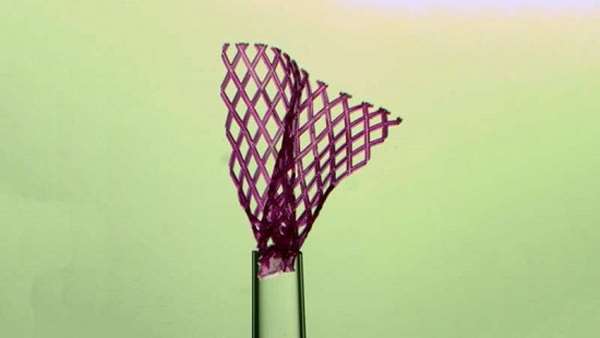Injectable tissue patch could help repair damaged organs
Repairing heart tissue destroyed by a heart attack or medical condition with regenerative cells or tissues usually requires invasive open-heart surgery. But now biomedical engineering Professor Milica Radisic and her colleagues have developed a technique that lets them use a small needle to inject a repair patch, without the need to open up the chest cavity.
Repairing heart tissue destroyed by a heart attack or medical condition with regenerative cells or tissues usually requires invasive open-heart surgery. But now biomedical engineering Professor Milica Radisic and her colleagues have developed a technique that lets them use a small needle to inject a repair patch, without the need to open up the chest cavity.
Radisics team are experts in using polymer scaffolds to grow realistic 3D slices of human tissue in the lab. One of their creations, AngioChip, is a tiny patch of heart tissue with its own blood vessels—the heart cells even beat with a regular rhythm. Another one of their innovations snaps together like sheets of Velcro.
Such lab-grown tissues are already being used to test potential drug candidates for side effects, but the long-term goal is to implant them back into the body to repair damage.
"If an implant requires open-heart surgery, its not going to be widely available to patients," says Radisic. She says that after a myocardial infarction — a heart attack—the hearts function is reduced so much that invasive procedures like open-heart surgery usually pose more risks than potential benefits. "Its just too dangerous," she says.
Miles Montgomery, a PhD candidate in Radisics lab, has spent nearly three years developing a patch that could be injected, rather than implanted.
"At the beginning it was a real challenge; there was no template to base my design on and nothing I tried was working," says Montgomery. "But I took these failures as an indication that I was working on a problem worth solving."
After dozens of attempts, Montgomery found a design that matched the mechanical properties of the target tissue, and had the required shape-memory behaviour: as it emerges from the needle, the patch unfolds itself into a bandage-like shape.
"The shape-memory effect is based on physical properties, not chemical ones," says Radisic. This means that the unfolding process doesnt require additional injections, and wont be affected by the local conditions within the body.
http://www.nature.com/nmat/journal/vaop/ncurrent/full/nmat4956.html?foxtrotcallback=true





ارسال به دوستان